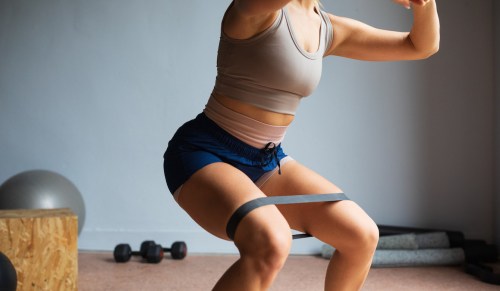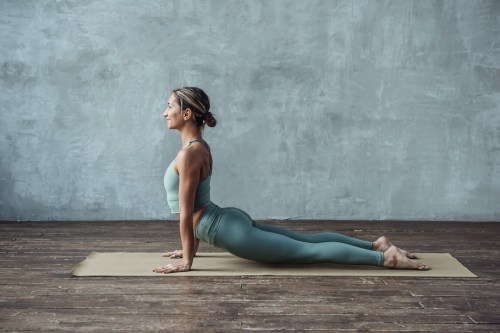We often hear about the importance of recovery after a workout. The body needs time to repair microtears in your muscles and build back stronger after one hard workout before the next one.
Experts in This Article
certified personal trainer and founder of Be. By Kate.
But what about rest and recovery during a workout? Taking a break between exercises or sets has plenty of benefits, yet many of us often skimp on the downtime while we work out. After all, we live in a culture that tends to applaud a “more, more, more” mindset, and when you’ve only got so much time in the day to work out, it’s tempting to just. keep. pushing.
However, as it turns out, resting during a workout can help you get more out of your body. Though you may feel like downtime is a cop-out where you’re not doing anything, it’s actually the key to pushing your muscles harder.
When do I need to rest during a workout?
Kate Cherichello, an ACE-certified personal trainer and the founder of Be. By Kate. Training & Coaching, says resting during a workout is most important when you’re trying to “max out” or build strength, or times when not taking a break would compromise your form and safety.
“The benefits of recovery include allowing your muscles to rest a bit, allowing you to go back to the exercise with more energy and renewed focus, and lessening the chance of injury that could come from pushing too hard on tired muscles or letting your form diminish,” Cherichello explains.
When you’re lifting heavy weights, for instance, setting them down for a minute gives your muscles—and mind—a chance to regroup so that you can tackle another set. Without that rest, not only will your form likely deteriorate, but you won’t be able to pump out as many reps, so you won’t get as much out of your strength training session.
What are the risks of skipping recovery?
Many people are so busy these days that it can be a major win to find just 15-20 minutes to work out. When we are pressed for time, we often feel like we have to make every second count. But this doesn’t necessarily mean every second should be spent exercising.
Cherichello says form and safety are paramount. “It is tempting to skip recovery times due to time constraints or the desire to workout ‘as hard as possible,’ ” says Cherichello. “If we try to push through exercises when too fatigued, it can lead to injury.” Remember: A form slip that leads to injury will set you back far more than those few minutes of rest time.
What if I’m short on time?
Taking rest breaks is most important when you are working with sets of exercises that target the same muscles (think doing two to three sets of squats, or squats followed by lunges). So if you’re short on time, one way you can minimize the need for rest breaks while still giving your muscles adequate recovery between sets is to alternate or cycle through exercises that use different muscle groups.
For example, instead of going from squats to lunges, go from squats to push-ups. Your quads, glutes, and hamstrings (the muscles predominantly targeted in squats) can rest during your push-ups (which mostly work the chest, shoulders, triceps, upper back, and core). After the set of push-ups, you can go back and do your next set of squats.
How long should I rest between exercises?
In general, the amount of effort you are putting into an exercise will help dictate whether you need to rest and for how long. For example, if you are running at a steady, conversational pace that feels easy to hold, you probably won’t need to stop; but to maintain the high intensity necessary for max-effort hill sprints, you’ll need to be resting in between each rep.
“There isn’t a magic number regarding rest periods, but it is often from 15-60 seconds for something like HIIT-style workouts or lighter strength-focused workouts, and up to two minutes for heavier strength workouts,” Cherichello notes.
Cherichello adds that there are varying schools of thought on exact work-to-rest ratios, as well as differing advice regarding when and how long to rest. Some people might jog or walk around through a rest to keep their heart rate slightly elevated and blood pumping, while others will stretch, grab some water, or simply breathe.
Cherichello’s best advice? Listen to your own body. “See what makes you feel good and strong but not so tired or sore you feel terrible the next day,” she says. “Observe results as you work consistently toward your goals. And always keep form at the top of your priority list.”
Oh hi! You look like someone who loves free workouts, discounts for cutting-edge wellness brands, and exclusive Well+Good content. Sign up for Well+, our online community of wellness insiders, and unlock your rewards instantly.
Sign Up for Our Daily Newsletter
Get all the latest in wellness, trends, food, fitness, beauty, and more delivered right to your inbox.
Got it, you've been added to our email list.











